60 years of DLR Lampoldshausen
Our declared goal has remained unchanged for 60 years: To give Europe independent, affordable and reliable access to space.
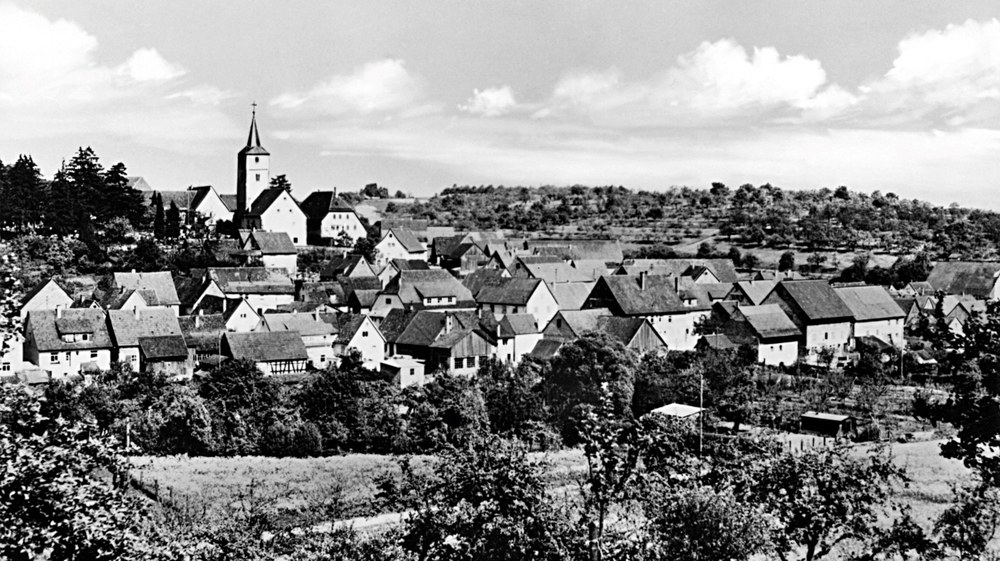
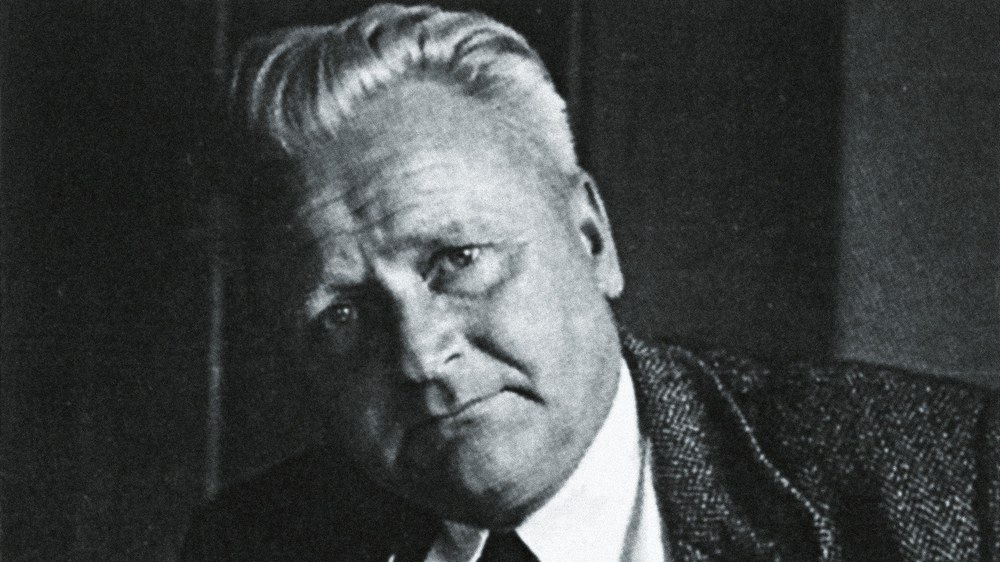
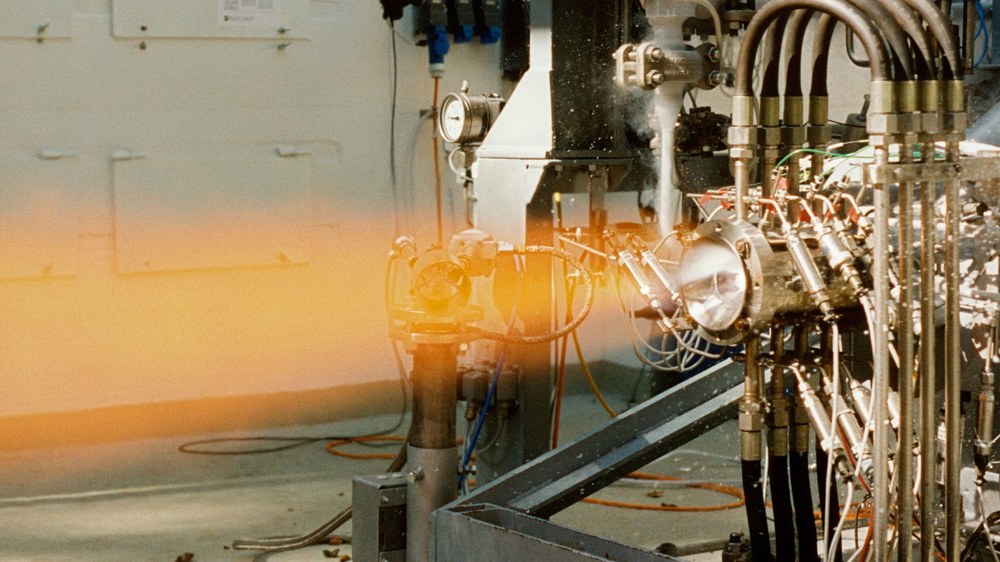
The dense forest almost obscures the driveway. Individual buildings flash through the greenery. The trees rustle. Suddenly, a deafening roar breaks the silence. A short time later, a white cloud of water vapor rises above the canopy. A few minutes later, the roar is over and the birds sing as if nothing had happened. They seem to know the goings-on in the Harthäuser Forest. 25 kilometers northeast of Heilbronn is the DLR site in Lampoldshausen. Since 1959, the engines that will propel future rockets on their journey have been tested here.
Visitors to DLR Lampoldshausen are visiting one of the most important sites in European space history. On the 51-hectare site in the north of Baden-Württemberg, a place of modern engine development has been created on historic land. It was space pioneer Eugen Sänger who founded a research institute in the Harthäuser Wald forest in 1959. 60 years after the site was developed, traces of its development history can still be clearly seen, but the future can be glimpsed. Even if some of the test benches of the DLR Institute of Space Propulsion located here are showing signs of patina, they have not grown a bit tired. More versatile than ever before, they are well prepared for the new requirements of European space transportation.

Spontaneous applause broke out on this autumn evening of October 10, 1959 in Lampoldshausen town hall. Professor Eugen Sänger, well-known space visionary and scientist, was satisfied: In a rousing speech, he had convinced the citizens of Lampoldshausen of the importance of the planned test site for rocket engines in their community, 25 kilometers north of Heilbronn. He had thus cleared the final hurdle. Now nothing stood in the way of building on the site with rocket test stands, roads, fuel depots and office buildings. Sänger had reached his goal.
The construction of the test site for liquid rocket engines in Harthäuser Wald was part of a longer tradition of German space research: as early as the 1920s, visionaries such as Hermann Oberth, Rudolf Nebel and Wernher von Braun had developed theories on the construction of rockets and carried out the first tests. During the Second World War, rocket technology was further developed for military purposes under the National Socialists. In October 1942, the world's first large rocket, the A4, was launched almost 100 kilometers into space from Peenemünde. After the end of the Second World War, many scientists went abroad, mainly to the USA, the Soviet Union and France. The experience and research results from Peenemünde became the basis for the development of new rockets there. While rocket research and development flourished in the victorious powers, space research in West Germany initially came to a halt as a result of the ban imposed by the Allied Control Council. As early as the 1950s, however, there were first signs that the ban would be lifted.
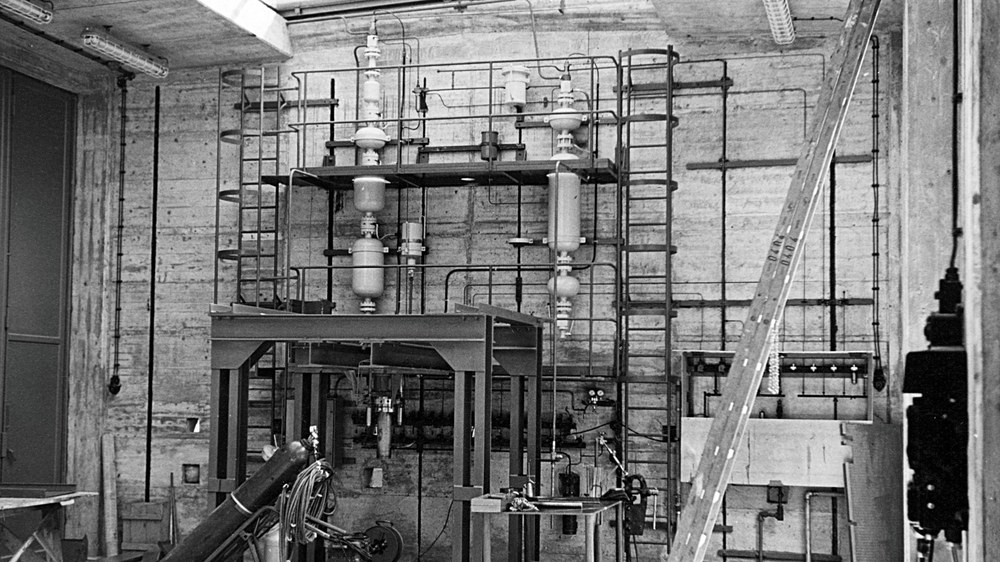
In 1954, Eugen Sänger, a leading scientist in space and rocket technology, returned to Germany from France to work in space research again. The timing was ideal: when the occupation statute was lifted in 1955, the ban on rocket research also ended and West Germany was able to conduct space research again after ten years. States, universities and industry wanted to be involved in this "start-up phase". Sänger initially founded the "Research Institute for Jet Propulsion Physics" (FPS) in Stuttgart. Since 1957, Sänger had been looking for a suitable location for a test site for liquid rocket propulsion systems for this institute and found it near Heilbronn in the Harthäuser Forest. The state of Baden-Württemberg supported the project and made the site available. In the fall of 1959, Sänger was also able to convince the skeptics in the Lampoldshausen community. The expansion of the test site began in April 1960, two years later the first test stands were ready for operation and the first tests for a national rocket program were carried out. By this time, however, Sänger had already left the management of the Stuttgart institute.

The first expansion stage of the test site was completed in 1963. In the same year, the site was selected for the first major European space project: Germany participated in the development of a European launch vehicle as part of ELDO. "Astris", the 3rd stage rocket engine developed by Germany, was to be tested in Lampoldshausen. The site was extended for this purpose. The new P3 and P4 test stands were suitable for tests under ground and altitude conditions. At the same time, the scientists and engineers in Lampoldshausen conducted research in the field of high-energy liquid propulsion systems. However, organizational difficulties and disagreements within ELDO brought the "Europa" rocket project to a halt in 1973. The Lampoldshausen site initially fell into a crisis, which was bridged by smaller projects.
Soon after the end of the ELDO program, the conviction prevailed in Europe that independent access to space was indispensable in order to carry out European satellite programs independently. In 1975, under the leadership of the newly founded European Space Agency (ESA), work began on the new Ariane launcher. Important tests of the Viking engine were carried out in Lampoldshausen. The first successful launch of the Ariane rocket took place on December 24, 1979: a success story began. The European rocket was further developed into Ariane 4 in order to be able to transport ever heavier satellites. Marketed by the company Arianespace, which was founded in 1980, Ariane became the world market leader in commercial launch systems. In addition to test operations for Ariane, Lampoldshausen also worked on other research programs such as the development of a reusable space glider and energy-saving boiler combustion processes.

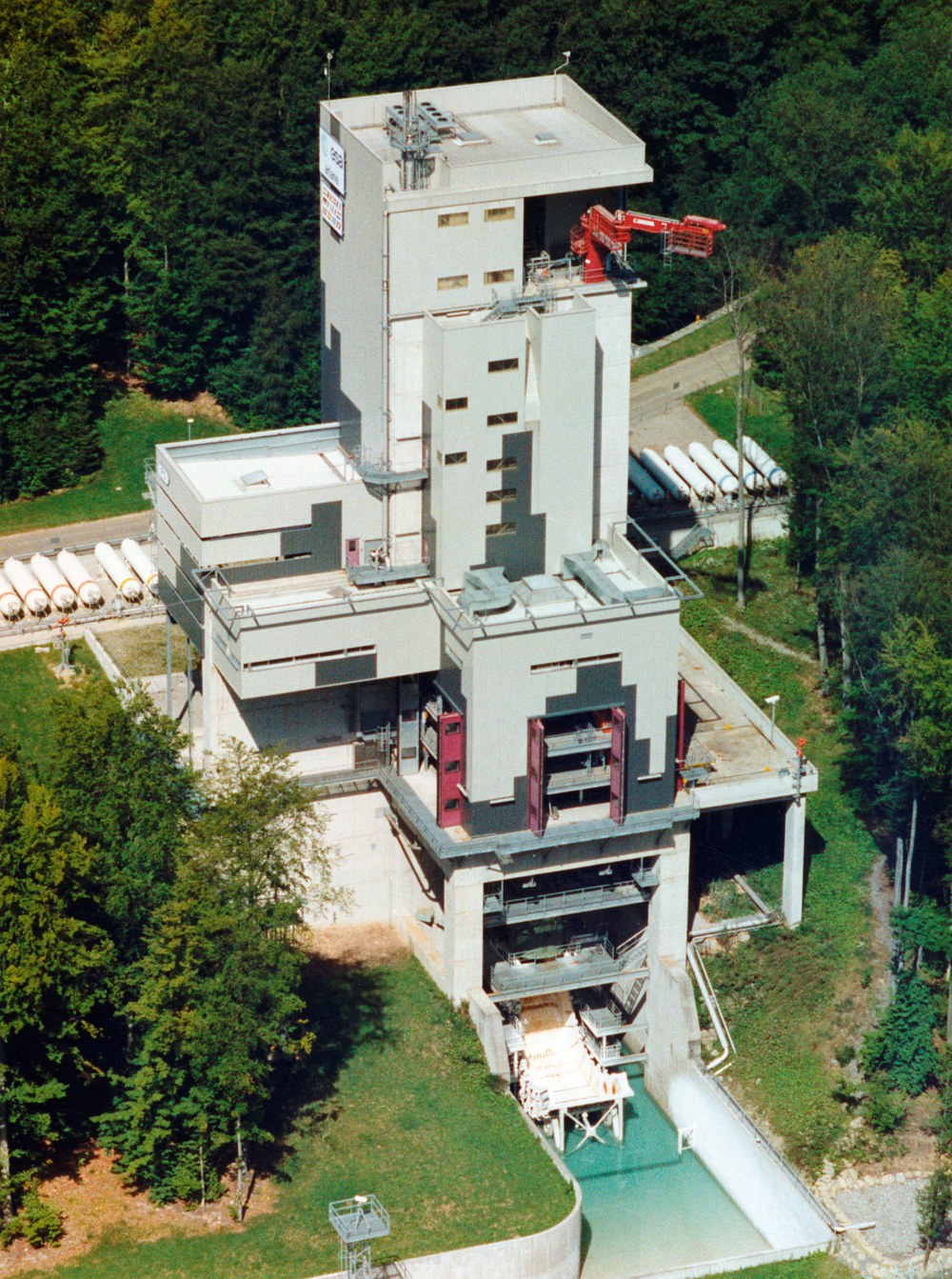
The first launch of an Ariane 5 rocket took place in 1996. The program was decided back in 1987. Ariane 5 was to carry a wide variety of loads into space with a high degree of reliability and at the lowest possible cost, thus strengthening the market position of European space flight. The DLR site in Lampoldshausen played a key role in the development of the Ariane 5 rocket. The site was expanded and converted to meet the requirements of the new engine tests. The engineers and technicians in Lampoldshausen built the large test stand P5 and converted the test stands P4.1 and P4.2. The modern engine test stands provide reliable test data for the upper stage engines of Ariane 5. With the Lampoldshausen 2000+ program, the site has also been closely aligning research and application with the requirements of future European space programs since the end of the 1980s. For example, investigations into high-pressure combustion are carried out at the newly constructed P8 research test stand. The Lampoldshausen site will remain indispensable for European space flight in the future.
In 2005, the new Ariane 5 ECA was successfully launched into space for the first time – with the Vulcain 2 main stage engine, which had been developed on the P5 test stand. DLR engineers also began testing the new re-ignitable Vinci upper-stage engine at P4.1 under altitude conditions in 2005 for an Ariane 5 ME that was being considered at the time. Meanwhile, the tried-and-tested Aestus engine was further developed on the P4.2. In the upper stage of the new Ariane 5 ES, it then took an ESA ATV unmanned space freighter to the International Space Station (ISS) five times from 2008. In Lampoldshausen, intensive efforts were also devoted to the next generation of scientists and engineers. The DLR_School_Lab was founded in 2005 and construction of the M11.5 student test field began in 2012. Finally, the DLR Forum for Space Propulsion opened in 2013 and has since attracted numerous visitors with its exhibition on the history of the site.
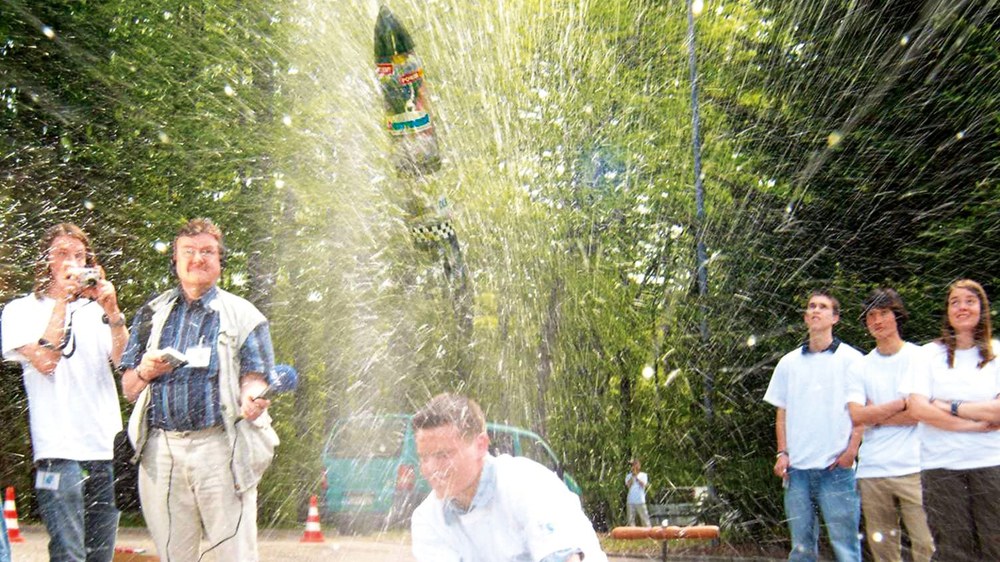
The future of DLR Lampoldshausen began back in 2014, when ESA decided to develop Ariane 6 and construction of the new P5.2 stage test stand began. The Vinci tests on the P4.1 were transferred to the Ariane 6 program in 2016 and in 2018 a challenging parallel operation took place with the final flight qualification and the development tests of the new Vulcain 2.1 main stage engine beginning on the P5. The same year also saw the 100th Ariane 5 flight and the last launch with an Aestus engine tested on the P4.2 for the Galileo navigation system. Looking further ahead, DLR engineers tested a technology demonstrator for the newly projected LOX/methane engine Prometheus at P3 back in 2016, and a third test cell for testing a complete propulsion system at system level has been under construction at the P8 test stand since 2018. A look into the future shows the first upper stage tests on P5.2 and the subsequent first launch of Ariane 6.


Before a rocket is ready to take off into space, its engines undergo several thousand seconds of testing on specially developed test stands. They are given the finishing touches in Lampoldshausen. One of the core tasks of the site is to further develop the test stands in a technologically flexible and cost-efficient manner over the coming years. DLR engineers are also constantly working on new technologies for future engine concepts. One example is the propellant combination of methane and liquid oxygen (LOX), which plays a promising role in the development of new liquid chemical space propulsion systems. In the "Prometheus" project, DLR researchers are working to ensure that this so-called LOX/methane technology will soon be ready for use in European space travel. It is to be tested on the P5 test stand. The P5 is a good example of the fact that the large test benches built in the early years are still groundbreaking today and are far from being written off. It was once built for the development of the Vulcain main stage engine for Ariane 5 and was put into operation in 1990.
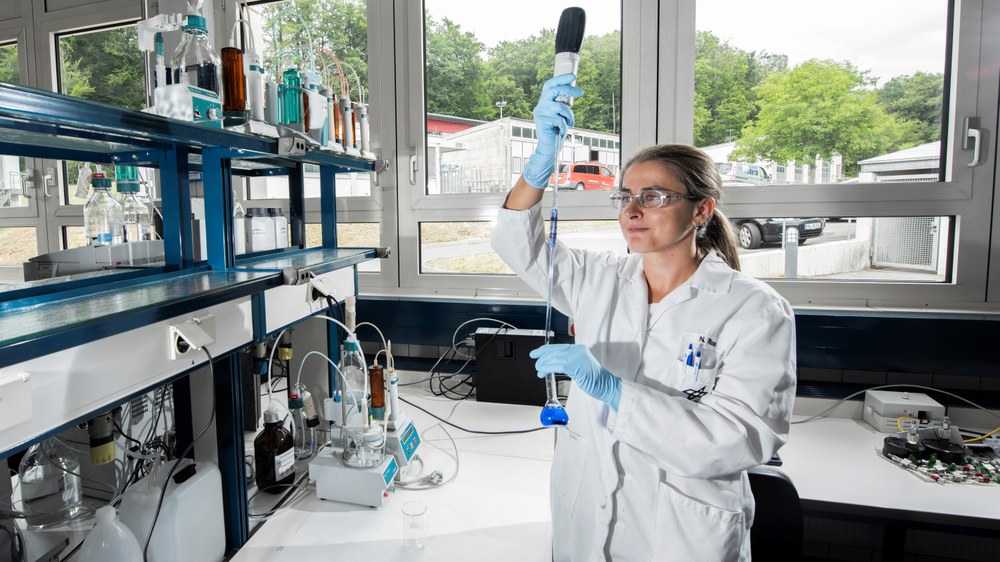
Future propellants are also an important part of research in Harthäuser Wald. To date, satellites have been operated with hydrazine. This propellant can be stored for a long time and also works reliably under space conditions. It is therefore indispensable for space missions today. However, it is also harmful to health. Handling hydrazine on the ground – during transportation, refuelling and launch preparations - is complex and expensive. That is why DLR scientists are analyzing, evaluating and testing new propellants, so-called green propellants. They are environmentally friendly, inexpensive and easy to handle - and will be at least as efficient as conventional propellants in the future.
Artificial intelligence (AI) is also playing an increasingly important role in aerospace in order to speed up the development of new generations of engines. Algorithms from the field of machine learning can independently develop predictive capabilities from previously generated data and then make them usable for data-based calculations, decisions and optimizations. However, developments that take place in this area at the site remain invisible to the group of visitors. They are created in the offices on computers. This includes Dr. Jan Deeken and Dr. Günther Waxenegger-Wilfing from the Systems Analysis Group at the Institute of Space Propulsion. They use artificial neural networks in the LUMEN project. In this project, the experts from Lampoldshausen are working on the interaction of all components of a rocket engine: from the combustion chamber to the turbopumps and the valves. By the end of the project, a complete model engine for research in a test bench environment is to be created for the first time. "A huge advantage is that we no longer have to wait days for the results of calculations. The new 'tool' allows us to combine the speed of simple modeling with the accuracy of numerical methods and delivers results in a matter of seconds. This takes our understanding of the interaction of components within a rocket engine to a new level," says Deeken. The AI has already performed well in designing the cooling channels of the combustion chamber. A neural network trained for this purpose predicts the complex behavior of the cooling medium methane and is therefore a central component of an automated cooling channel design for the LUMEN combustion chamber.

